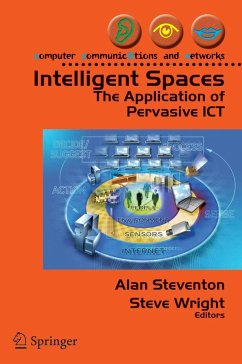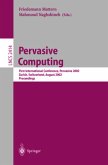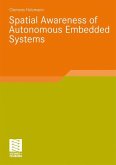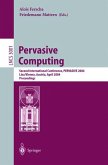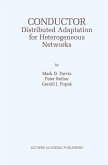This book sets out a vision of intelligent spaces and describes the progress that has been made towards realisation. The context for Intelligent Spaces (or iSpaces) is the world where ICT (Information and Communication Technology) and sensor systems disappear as they become embedded into physical objects and the spaces in which we live, work and play. The ultimate vision is that this embedded technology provides us with intelligent and contextually relevant support, augmenting our lives and experience of the physical world in a benign and non-intrusive manner.
The ultimate vision is challenging, there are technical barriers, especially in the integration of complex systems and in the creation of intelligent software, as well as social and economic barriers.
This book explores what is technically possible and what users will need for the future. Academic and industrial researchers in Computer Science, IT and Communications, as well as practitioners will find this key reading as it delivers practical and implementable current research.
Hinweis: Dieser Artikel kann nur an eine deutsche Lieferadresse ausgeliefert werden.
The ultimate vision is challenging, there are technical barriers, especially in the integration of complex systems and in the creation of intelligent software, as well as social and economic barriers.
This book explores what is technically possible and what users will need for the future. Academic and industrial researchers in Computer Science, IT and Communications, as well as practitioners will find this key reading as it delivers practical and implementable current research.
Hinweis: Dieser Artikel kann nur an eine deutsche Lieferadresse ausgeliefert werden.
Intelligent spaces : the application of pervasive ICT (Computer Communications
and Networks)
Steventon A., Wright S., Springer-Verlag New York, Inc., Secaucus, NJ, 2005. 438 pp.
Type: Book
Date Reviewed: Mar 16 2006
Information and communication technology (ICT) has been around for several years. It
improves the way we compute and communicate, and yet human lives have remained
essentially the same. However, this is about to change. As this book explains, every facet
of human endeavor will be affected and changed (for the better, we hope) by pervasive
ICT, referred to here as intelligent spaces (iSpaces).
The book consists of 24 chapters written by different authors. The topics can be roughly
divided into five parts. The first part introduces the basics of iSpaces: what they are, their
impact, and the science and technology needed behind them. The second part briefly
explains several applications of iSpaces, ranging from supply chain, home, and community
environment to the monitoring of highway traffic and glaciers. The third part discusses
trust, privacy, and security issues in iSpaces. The fourth part is oriented more toward
technology, discussing several implementations of iSpaces. The final part examines the
digital infrastructure that will need to be there in order for iSpaces to work. In general, this
book is well edited and each chapter is concise. However, 24 chapters are a lot to digest
and perhaps the fourth part could have been omitted without affecting the value of the
book too much.
The intended audience for this book is not clear. If meant for the general public, then the
authors could perhaps have focused more on the social impact and changes iSpaces will
bring. Color images would also help to engage readers.
One final question comes to mind: are iSpaces always good for people? Have any disasters
occurred in the past due to pervasive (or some may say invasive) ICT? A chapter or two
discussing real examples of the downside of iSpaces would help this book to be more
complete and insightful.
and Networks)
Steventon A., Wright S., Springer-Verlag New York, Inc., Secaucus, NJ, 2005. 438 pp.
Type: Book
Date Reviewed: Mar 16 2006
Information and communication technology (ICT) has been around for several years. It
improves the way we compute and communicate, and yet human lives have remained
essentially the same. However, this is about to change. As this book explains, every facet
of human endeavor will be affected and changed (for the better, we hope) by pervasive
ICT, referred to here as intelligent spaces (iSpaces).
The book consists of 24 chapters written by different authors. The topics can be roughly
divided into five parts. The first part introduces the basics of iSpaces: what they are, their
impact, and the science and technology needed behind them. The second part briefly
explains several applications of iSpaces, ranging from supply chain, home, and community
environment to the monitoring of highway traffic and glaciers. The third part discusses
trust, privacy, and security issues in iSpaces. The fourth part is oriented more toward
technology, discussing several implementations of iSpaces. The final part examines the
digital infrastructure that will need to be there in order for iSpaces to work. In general, this
book is well edited and each chapter is concise. However, 24 chapters are a lot to digest
and perhaps the fourth part could have been omitted without affecting the value of the
book too much.
The intended audience for this book is not clear. If meant for the general public, then the
authors could perhaps have focused more on the social impact and changes iSpaces will
bring. Color images would also help to engage readers.
One final question comes to mind: are iSpaces always good for people? Have any disasters
occurred in the past due to pervasive (or some may say invasive) ICT? A chapter or two
discussing real examples of the downside of iSpaces would help this book to be more
complete and insightful.

